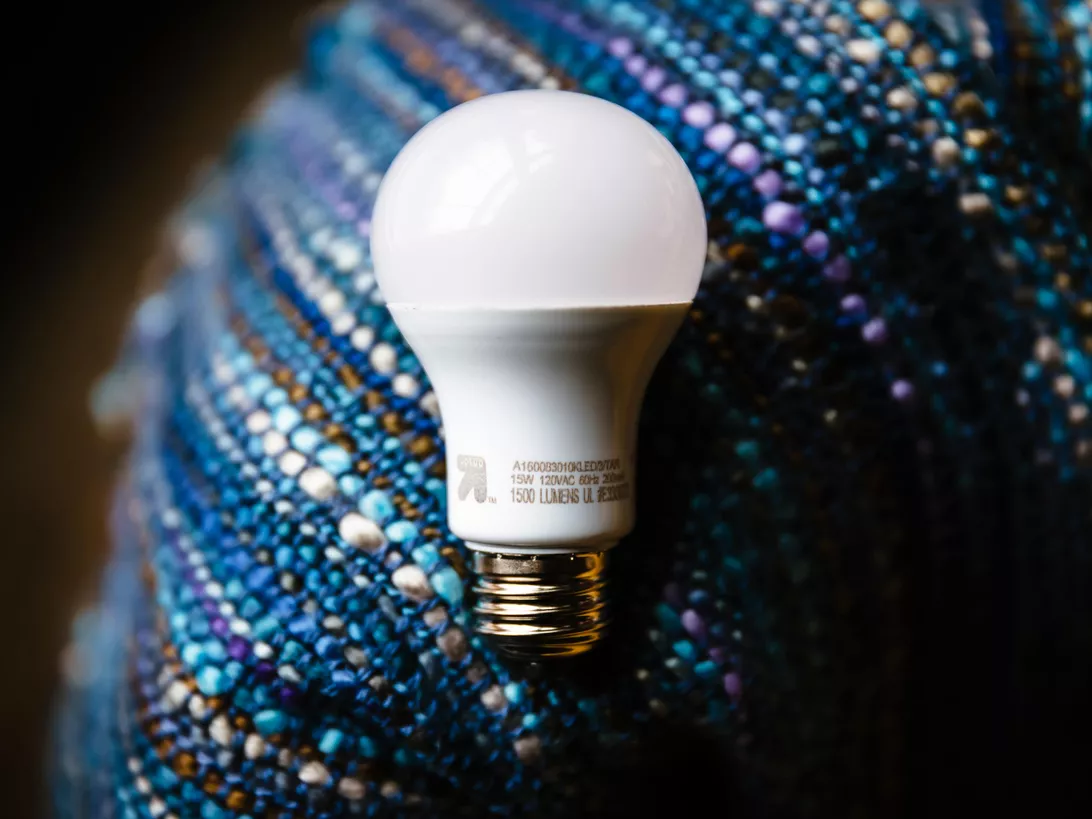Upgrading your light bulbs to LED lights is the easiest and smartest way to help reduce your home’s carbon footprint.
BY: RY CRIST / CNET / READ IN 9 MINUTES
Our lights are usually the first things we turn on when we wake up, and the last things we turn off before we go to sleep. We use them every day and to do almost everything: cook, work, enjoy family meals and relax with a book. But we hardly ever think about how one type of light can be a success story in the fight against climate change.
I’m speaking of LEDs, which put out the same amount of light as the incandescent bulbs that came before them while using just a fraction of the energy. They’ve been rolling out onto retail shelves for a decade now, and prices have steadily dropped to the point where you can find perfectly decent, super-efficient options selling for as little as a buck apiece.
That makes LEDs one of the easiest energy efficiency upgrades consumers and homeowners can take advantage of — and also one of the most meaningful, given that light bulbs are such a constant, everyday presence in our daily lives. Make the switch, and the energy savings will start to accumulate daily, all without any additional work or thought on your part.
But they won’t just lower your monthly energy bill — LEDs will make a difference in the fight to reduce CO2 emissions, too. How much of a difference? Let’s take a look.
Cutting carbon, bit by bit
“Widespread use of LED lighting has the greatest potential impact on energy savings in the United States,” reads a Department of Energy guide to LEDs. In fact, according to the DOE projections, the energy saved from LEDs could equal 348 terawatt hours by 2027. That’s an awful lot of electricity we won’t need anymore — equivalent to roughly 8.5% of the total amount of energy generated in the US in 2019, or the annual energy output of 44 large-sized power plants.
Now, let’s convert that to carbon. According to the US Energy Information Administration, in 2019 the US generated most of its electricity from CO2-emitting fossil fuels — 38.4% from natural gas and 23.5% from coal, primarily. Next on the list are nuclear power (19.7%) and renewable energy sources such as wind turbines (7.3%), hydroelectric power (6.6%), solar power (1.8%) and biomass (1.4%) — all of which are considered low-carbon or carbon neutral by the EIA.
The US generated a total of about 4,118 TWh of electricity in 2019 from all sources, which in turn produced about 1.62 billion metric tons of CO2 (98% of which came from coal and natural gas). That’s just under 400,000 metric tons of CO2 for each TWh generated. At that rate, the projected 348 TWh of energy that we’ll save from using LEDs by 2027 adds up to about 137 million metric tons of CO2 we won’t expel into the atmosphere.
Now here’s the reality check. According to the UN’s Emissions Gap Report for 2019, which documents progress towards the goals set by the 2016 Paris Agreement, we’ll need to see a worldwide reduction of at least 15 gigaton of CO2 emissions by 2030 in order to hold the rise in global temperatures to 2 degrees Celsius in the current century. And since a gigaton is equal to 1 billion metric tons, that 137 fewer million metric tons of CO2 emissions that the US could emit by using LEDs only amounts to about 0.9% of the total reduction the world needs in the next decade. In other words, LEDs aren’t going to save the planet alone.
Still, when you add in the LED efficiency gains made by the rest of the world, it’s not difficult to imagine how our lights could end up being a sizable part of the solution. Because they’re such a simple and affordable upgrade, especially compared to things like electric cars and refrigerators, lots of people can buy in easily.
Dollars and sense of it all
In fact, the LED value proposition makes it hard to justify not buying in. It’s a common refrain throughout the dozens of LED light bulb reviews I’ve written for CNET over the years, but I’ll say it again here — LEDs will absolutely save you money, enough to pay for themselves in relatively short spans of time.
Let me walk you through an example. Say you want to replace a plain old 60W incandescent light bulb with an LED. Unless you’re buying a store brand or buying in bulk, a decent, dimmable LED from a reputable name like GE, Philips or Cree Lighting will typically sell for about $4 per bulb. That’s a bit more than the dollar or so you probably spent on that old incandescent.
So, you spend $4 and swap out the bulb. You use it for 3 hours a day, on average. With an actual power draw of around 9 or 10 watts, that 60W replacement LED will only add a little over $1 to your energy bill each year. Total cost after year one? $5.
Now, let’s imagine that instead of buying that LED, you found a spare 60W incandescent bulb in the back of your closet. A bulb like that will add about $7 to your energy bill over that same period (and then you’ll probably need to replace it, because incandescent bulbs don’t last for much longer than 12 months).
That means that the LED pays for itself in less than nine months, and it’ll keep on saving you money for the rest of its life. (In most cases, LED bulbs will last at least 10 years, if not 20.)
If you’re talking about upgrading from a fluorescent bulb, or a CFL, the payback period jumps to a little under three years — but that’ll typically still be well within the LED’s warranty period. In other words, the LED is still a no-brainer, and it’ll still save you money.
Now, multiply those savings across all of the lights in your home that still need an upgrade. If you start with the bulbs you use the most and keep upgrading bit by bit, it really starts to add up, It’s a pitch that seems to be resonating with consumers — in fact, the LED market share has tripled over the past five years, jumping from 19% up to 60% in 2019.
What’s next for the efficiency fight?
In 2007, a bipartisan majority in Congress passed the Energy Independence and Security Act, which called for higher efficiency standards for products such as appliances and light bulbs. Those higher lighting standards were designed to be phased in over several years, including new standards for specific categories of bulbs, like candelabra bulbs, floodlights and bathroom vanity globes.
The DOE has pushed back against those rising standards under the Trump administration, arguing that those categories aren’t ready for higher efficiency standards. But according to figures from the Consortium for Retail Energy Efficiency Data, LED bulbs in most of those categories are already outselling everything else on the market.
“LEDs achieved particularly significant gains in 2019 among candelabra (more than doubling) and globe bulb types and represented a majority of sales for both bulb types for the first time,” the report reads.
According to a 2017 report from Lawrence Berkeley National Laboratory, bulbs in those categories have a nationwide installed stock about 80% as large as regular, A-shaped light bulbs (you know — the kind that appears over a cartoon character’s head when they have an idea).
“[Non A-shaped bulbs like reflectors and floodlights] offer a disproportionately large potential for energy savings since the vast majority are currently traditional or halogen incandescent lamps,” the report’s authors add. Holding those bulbs to a higher efficiency standard, as EISA intended, would add up to a total CO2 reduction of roughly 540 million metric tons by 2030.
Missed opportunities like those are what have efficiency watchdogs like the NRDC crying foul.
“The Energy Department has attacked the light bulb efficiency standards with a one-two punch that puts at risk the up to $14 billion a year of utility bill savings consumers were due to receive,” said Noah Horowitz, director of NRDC’s Center for Energy Efficiency Standards. “First, the agency cut the scope of the standards in half without any technical justification, and then declared that they weren’t going to update the standards for the remaining ones, even though they were required to do so by law.”
In February, conservation-minded groups including the NRDC sued the Department of Energy, and they filed their reply briefs to the DOE position on July 8. If the court determines that it doesn’t have enough information to decide the case, it’ll schedule oral arguments, likely sometime between August and November.



